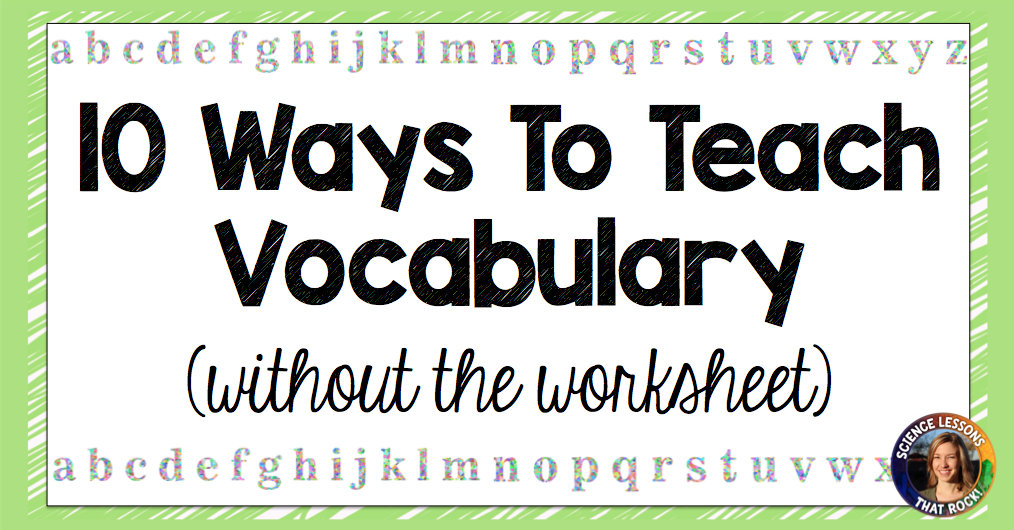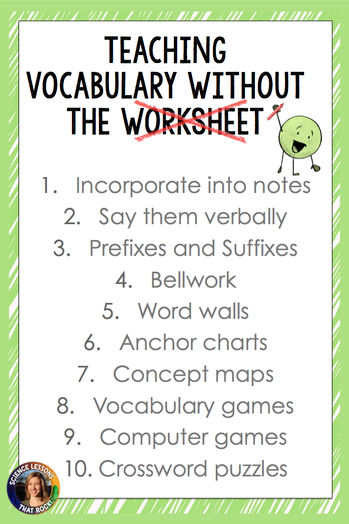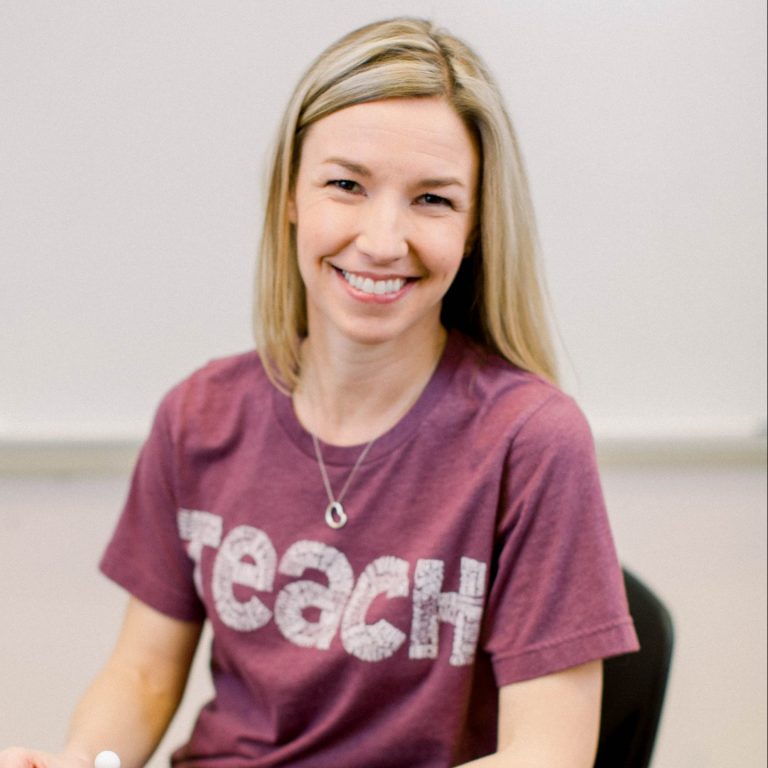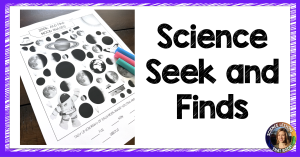The first thing I do when teaching new vocabulary is incorporate them into my notes. I have students take notes about once a week, and the vocabulary should come organically throughout the lesson and discussion. (I teach at an AVID school, so we use Cornell notes).
2. Make students say the words verbally
While I am giving notes and we are learning new vocabulary, I make students say the words out loud with me. This is HUGE for your ESL students, so don’t skip it! Even if you teach high school and you are thinking “they’ll never do that…” trust me, they’ll do it. They would rather practice saying it correctly than look silly pronouncing it wrong in front of their peers because you didn’t give them an opportunity to practice. In class it usually looks something like this:
Teacher: “Here is a new vocabulary word (shows word up on the board). Anyone want to try and guess how it is pronounced?”
Your Most Talkative Student: “Auto-troffff?”
Teacher: “Good one! It’s pronounced autotroph. Can everyone repeat after me? Autotroph” (I point at myself when I say it)
Teacher points at class
Class: “Autotroph”
3. Prefixes and Suffixes
One way to help students remember vocabulary is by breaking down the prefixes and suffixes while you teach it to them. If you are teaching the vocabulary word phototropism, break it down into photo- (light) and trop- (to change). Here is a handy reference sheet you can print and have students keep in their binders.
4. Practice them for Bellwork
Every day when students come in, we begin class with a bellwork question or two. The question usually asks students to recall something we learned the day before, and they can pull out their notes to look up the answer. The key here is repetition- they are seeing the new term multiple days in a row.
5. Make a Word Wall
One way to help visual learners is by having a vocabulary word wall in your classroom. Each time you learn a new word, add it to the wall (bonus points if you include pictures next to each word… your ESL kids will thank you). Having visual clues and seeing them daily really helps students. You can make your own pretty easily in powerpoint or even hand write them on notecards. You might also want to download this freebie from my friend over at Biology Roots to get you started!
6. Anchor Charts
Another great tool for visual learners are anchor charts. Anchor charts allow students to have a visual representation of a concept and “anchor” their learning. I’m not the most creative or artistic so these aren’t my thing… but some teachers rock them! (If you are on instagram, check out @The_weird_science_teacher, she is the anchor chart queen!)
7. Concept Maps or Thinking Maps
Concept maps and thinking maps take the visual aspect a little further by having students strategically map out the concept. A lot of textbooks offer concept maps with their teacher resources, so that is a great place to start. You can also try thinking maps (if you haven’t heard of them, you can read up here) or even create your own with an online website. If your students are Google savvy, they could make their own in Google drawings.
8. Play Vocabulary Games
We play a lot of games in my classroom, but I promise they are all educational. Games bring up the excitement (especially if you have rewards for winners) and allow students to review vocabulary terms before you test them. Some of my favorites are:
- Bingo- When we play bingo I call out the definitions and students need to identify the vocabulary term on their bingo card. I have sets available in my TpT store or you can make your own on sites like this one.
- Tarsia Puzzles- To complete a tarsia puzzle, students shuffle around triangles so one side has the vocabulary term and the other triangle has the matching definition. You can find science related ones in my TpT store.
- Memory- Growing up we called this game “concentration” but essentially its the game where you flip over two cards at a time hoping they match. I easily make these in powerpoint- One slide has a word and the next slide has the definition. Print them out small, chop, and have students place them all upside down on the desk. They get to flip over two cards at a time and see if they match. The student with the most pairs at the end wins.
- Pictionary- I don’t do this game often because sometimes it can get a little chaotic! But split your class into 2 teams and have them draw out vocabulary terms pictionary style on the whiteboard.
More games! Technology can be a great tool when wanting to create or play review games. Kahoot is always fun and easy to use, along with sites like Gimkit or my personal favorite, quizlet live.
10. Crossword puzzles
I am not a huge fan of word searches as review activities (they don’t really require any critical thinking) but I am a fan of crossword puzzles. A simple google search on your topic should pull up some options, or you can make your own by typing in your words and clues on sites like this one.
I hope you can pick one or two of these options and use them in your classroom! If you have any other vocabulary retention tips, please drop them in the comments!









